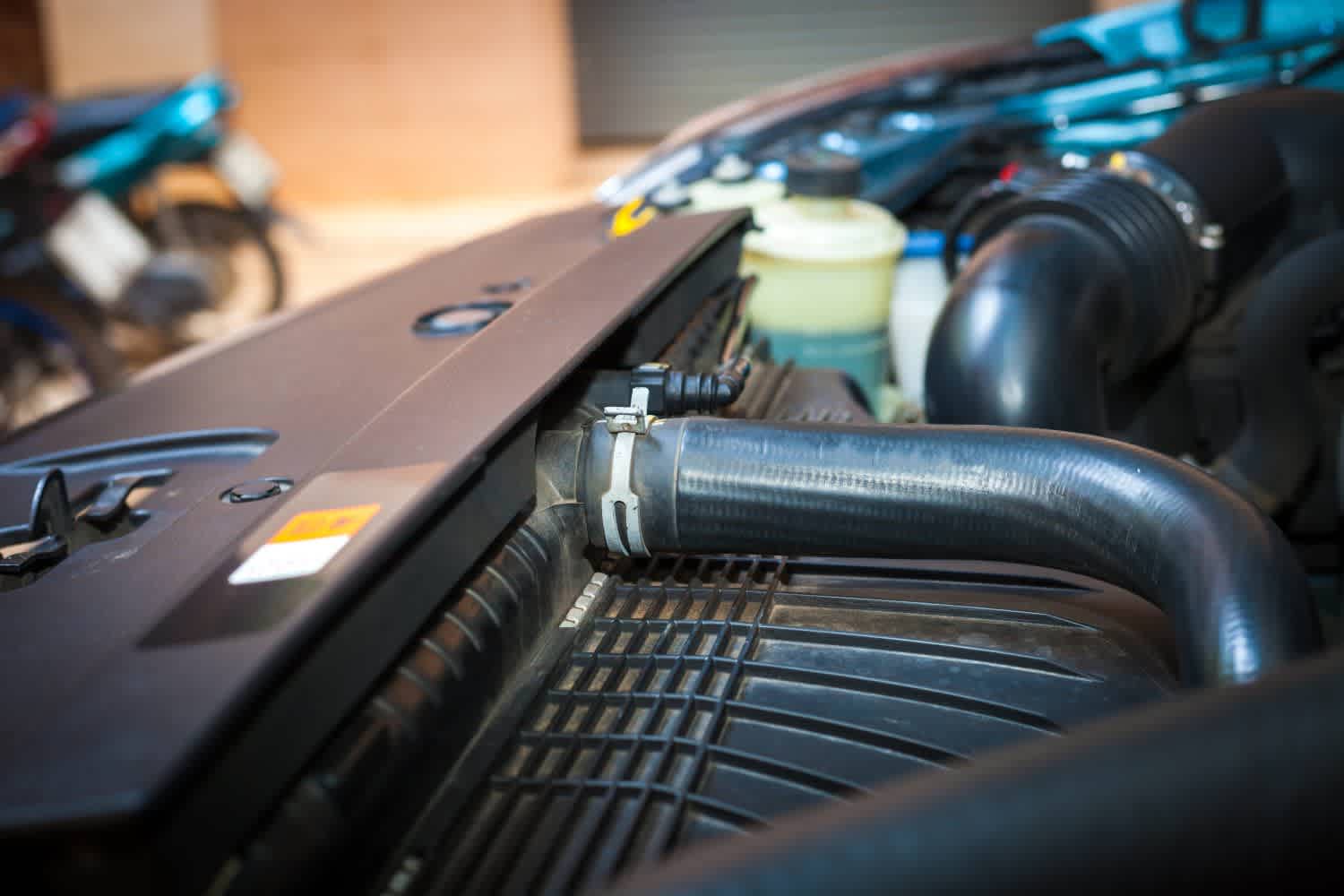
Radiator hoses play a key role in managing coolant fluid flow in your vehicle’s cooling system. Every vehicle typically has two types of radiator hoses: an upper and lower hose. Typically, the upper radiator hose is connected to the engine’s thermostat housing and the lower radiator hose is attached to the engine’s water pump, which suctions fluid. Both hoses also connect to the radiator at the other end.
Both hoses need to be in good condition for the cooling system to operate properly. Unfortunately, they’re prone to wear because of constant exposure to high and low temperatures. If one or both of them are damaged, you may encounter cooling system or engine problems.
How to Tell If Your Radiator Hose Is Bad
A bad radiator hose may appear brittle and worn, making it easy to spot during a regular inspection. However, because it’s hidden under your hood, you may not notice that it’s already damaged. Here are some signs of a bad radiator hose that you should look out for:
Coolant Fluid Leaks
If your car has a bad radiator hose, it’s likely to develop coolant fluid leaks. If a leak develops, you may immediately notice a sweet-smelling fluid dripping from underneath your car. It may appear green, yellow, purple, or blue in color, depending on the vehicle. However, you may need to investigate further to make sure that the leak’s being caused by a bad radiator hose. Other cooling system problems, such as a faulty radiator, can also cause coolant fluid leaks. Consult a mechanic to determine where the leak is coming from and what’s causing it. If it’s due to a bad radiator hose, you’ll need a radiator hose replacement.
Low Coolant Levels
Car owners should check vehicle fluids regularly. If your vehicle is low on coolant, it may be a sign that a radiator hose in your vehicle has become faulty. Low coolant levels, which typically trigger your low coolant light, are one of the most common signs of a bad radiator hose. It may mean that your vehicle is losing coolant fluid, possibly at your radiator hose.
If you encounter this symptom, it’s best to pull over and inspect your vehicle before heading to your destination. Driving your vehicle with low to empty coolant fluid can lead to overheating, which can result in costly engine damage.
Coolant Crust Formation Near Radiator Hose
A seeping radiator hose can lead to coolant crust buildup at the location where the hose meets the radiator or engine.
Swollen or Spongy Radiator Hose
Car owners should routinely check under the hood and inspect for faulty parts. If you look at your radiator hose and it’s swollen or spongy, it may be time for replacement. A swollen or spongy radiator hose may burst while driving, so it’s best to check the hoses routinely to avoid any mishaps.
Broken or Worn Radiator Hose
Your radiator hose is always in contact with heat and coolant fluid. The changing temperatures can cause your radiator hose to wear and break. It may develop holes, cracks, and even become brittle. If it’s in bad condition, it won’t be good for your engine. If you look under your hood and find that your radiator hose is too broken or worn to function, schedule a radiator hose replacement immediately.
Engine Overheats
If your cooling system isn’t properly expelling heat, your engine may overheat.Faulty cooling system parts, such as a bad radiator hose, may result in coolant leaks and overheating. A quick consultation with your mechanic can help you figure out if a leaking radiator hose is causing your engine to overheat and whether or not you need a radiator hose replacement.

What to Do if You Have a Bad Radiator Hose
Radiator hose problems can put you in troublesome situations. You should act as soon as you notice any symptoms, so that you don’t have to deal with radiator hose failure while driving. If you notice any coolant fluid leaks, take your vehicle to your mechanic straight away. Keep in mind that other parts may also cause cooling system problems, so don’t hesitate to ask your mechanic for an exact diagnosis.
Having your radiator hose fail while driving may be complicated. If it happens, pull over, turn off your engine, and get your car towed to a safe location. Avoid opening your radiator cap while checking under the hood, so that you don’t burn yourself. You can get your radiator hose replaced later, once the engine has cooled down.
If you notice that your radiator hose is broken while your car is parked, you can easily take your vehicle to a mechanic for a radiator hose replacement. However, if you’re confident in your DIY skills, you can also try doing it yourself by checking out this radiator hose replacement guide.